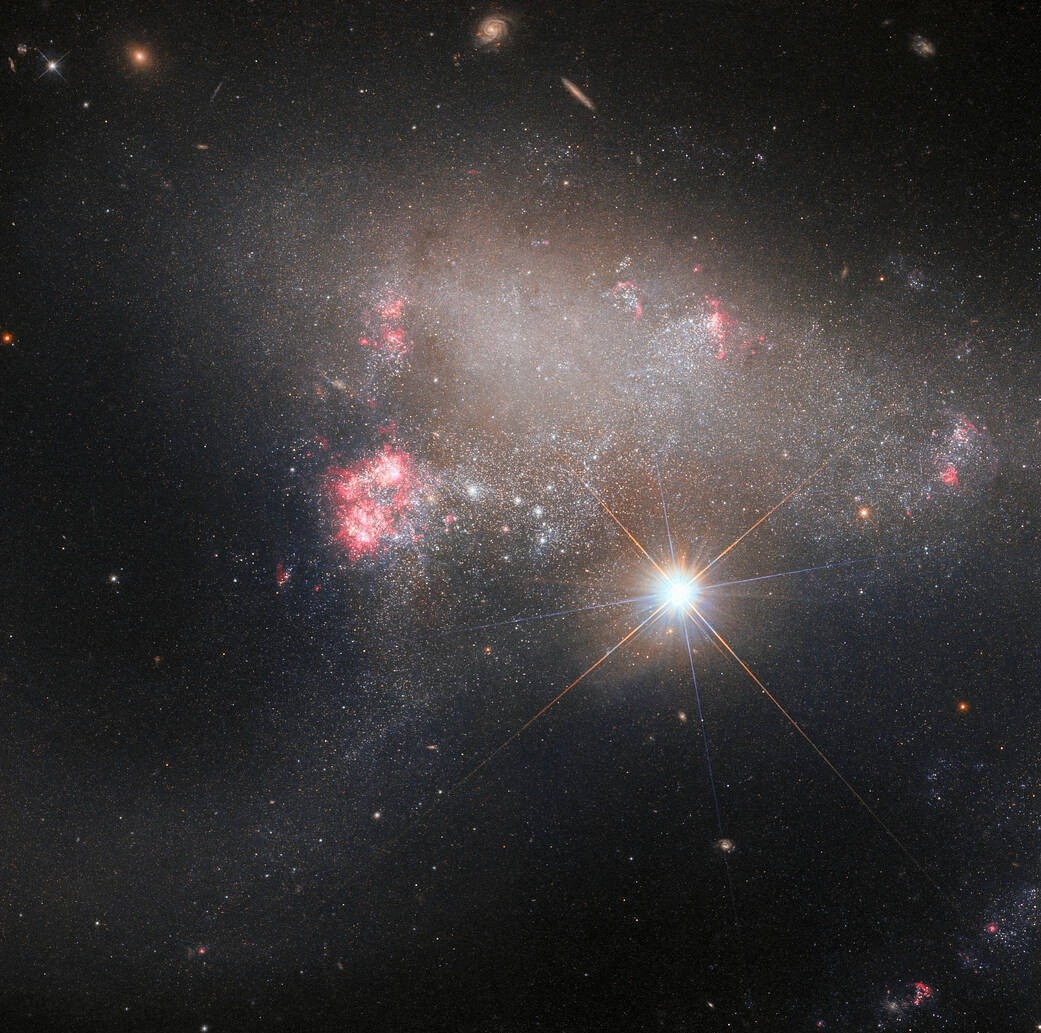The irregular galaxy Arp 263 can be seen in the background of the Hubble Space Telescope’s image but is overtaken by a stellar photobomber, the bright star BD+17 2217.

Image Credit: ESA/Hubble & NASA, J. Dalcanton, A. Filippenko
Arp 263—also called NGC 3239—is a patchy and irregular galaxy studded with regions of star formation that happened recently, and astronomers hope that its ragged appearance is a result of having developed from the merger of two galaxies. In the constellation Leo, it lies around 25 million light-years away.
Two distinct Hubble investigations into Arp 263, utilizing two of Hubble’s instruments, added up data to this image. The initial investigation was part of a measure to note the sites of recent supernovae, like the supernova SN 2012A that was detected just over ten years in Arp 263.
Hubble’s powerful Wide Field Camera 3 was utilized by astronomers to look for persistent remnants of the colossal stellar explosion.
The second investigation is part of a campaign utilizing Hubble’s Advanced Camera for Surveys to image all the earlier unseen strange galaxies in the Arp catalog, such as Arp 263.
This is to determine encouraging subjects for additional study utilizing the NASA/ESA/CSA James Webb Space Telescope.
The interloping foreground star, called BD+17 2217, has been adorned with two sets of crisscrossing diffraction spikes.
The interaction of light happened with the internal structure of the Hubble implies that concentrated bright objects, like stars, are encircled by four prominent spikes.
The image of BD+17 2217 was made utilizing two sets of Hubble data; hence, the spikes from both images encircle this stellar photobomber. The spikes are at various angles since Hubble was at various orientations when it gathered the two datasets.